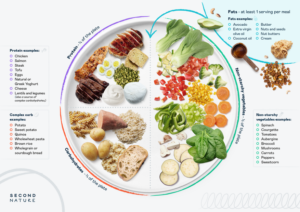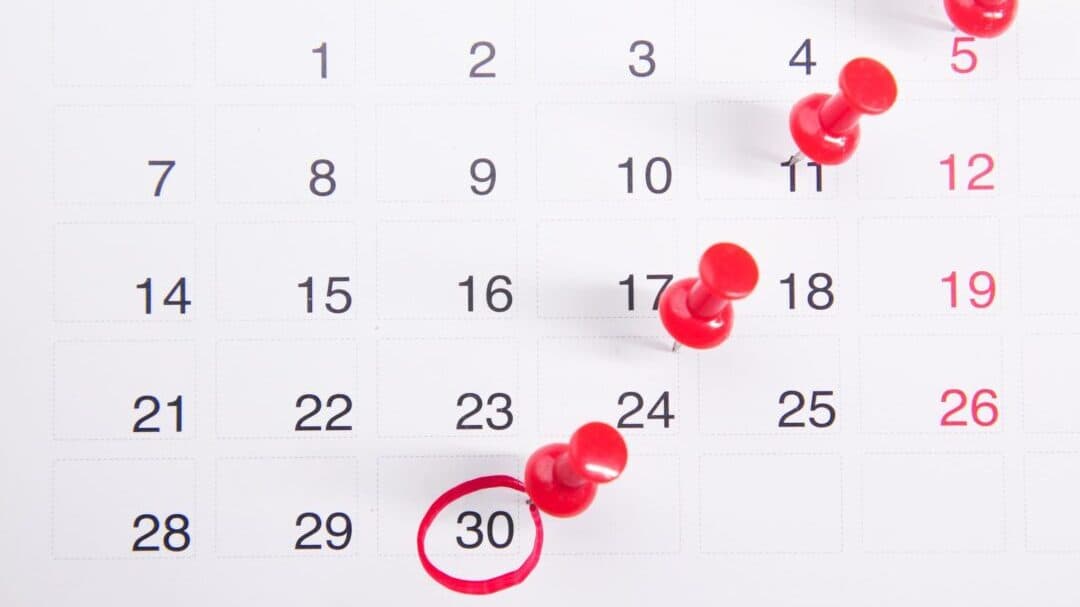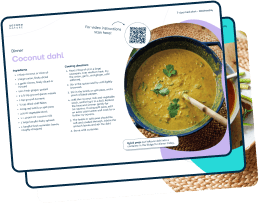Sometimes, we want to achieve our weight loss goals quickly, whether kickstarting a new year or getting ready for a holiday or wedding where we want to feel our best.
Although making healthy changes is a long-term journey, two months is an achievable timeline to see body fat reductions and weight loss results.
It’s important to remember that making sustainable changes to our diet and lifestyle and building lasting habits are critical in ensuring that any weight we lose stays off in the long run.
Fad diets often claim to be the answer to managing obesity quickly. But, evidence suggests that most people only last 12 days on their fad diet, and 41% of calorie counters go on to gain back more weight than they lost.
These diets are often too restrictive or low-calorie and interfere with our lifestyles, so we can’t stick to them long-term, and we often experience more weight gain.
Instead, a more sustainable option that fits into your lifestyle means you’ll continue to see positive results and will be able to maintain your new habits well beyond two months.
At Second Nature, we provide you with a registered dietitian or nutritionist who supports every step of your weight loss journey and helps you make the right lifestyle changes.
If you’re sick of the yo-yo dieting cycle where your weight is constantly up and down, consider Second Nature, where 9/10 people lose weight and keep it off – even after 12 months.
To join 150,000 others who’ve found lasting weight loss, click here to take our health quiz.
Although only one piece of the weight-loss puzzle, our diet directly affects our weight. Exercise, stress levels, and sleep quality are all equally important, but an excellent place to start is often considering what we eat.
Medication-assisted weight loss with a future focus
Start with Wegovy or Mounjaro, transition to habit-based health with our support


So, what should I eat to lose weight in 2 months?
Research suggests that a lower-carb diet is the most effective way to lose weight and keep it off. Reducing our carb intake means we naturally eat more protein and healthy fats, which are more filling than carbs.
Not only does this mean we’re more likely to feel satisfied with our meals, but we also stay fuller for longer, so we’re less likely to snack throughout the day.
Additionally, by reducing the number of carbohydrates in our diet, we can reduce our cravings for refined carbs, such as crisps and chocolate.
Refined carbohydrates create significant peaks and troughs in our blood sugar (blood glucose) levels, leading to cravings for more carbs, leaving us trapped in a vicious cycle.
A lower-carb diet can reduce these cravings, helping us consume fewer ultra-processed foods and lose weight.

Since protein and fat have less impact on blood sugar levels, eating more of these means fewer blood sugar fluctuations throughout the day and lower insulin levels.
Lower insulin levels can, in turn, aid with weight loss as consistently high insulin levels promote fat storage.
However, there’s no need to cut out carbs entirely. Extreme changes to our diet are rarely sustainable in the long term.
Instead, choose lower-carb options where possible and choose higher-fibre carbohydrates (for example, sweet potato, oats, or whole wheat pasta) when you eat carbs.
Yes, you need to be in a calorie deficit to lose weight, but the important part is how you achieve this sustainably so it doesn’t have a negative impact on your physical and mental health.
Fibre makes us feel fuller for longer, making us less likely to see dramatic fluctuations in our blood sugar levels.
Here’s a weekly lower-carb meal plan to help you get started. Don’t like one of the suggestions? Swap it out for one of our other recipes.
| BREAKFAST | LUNCH | DINNER | |
| MONDAY | Toasted muesli | Tomato soup | Chana masala |
| TUESDAY | Overnight oats | Leftover tomato soup | One-pot fish fennel and black olives |
| WEDNESDAY | Savoury muffins | Warm halloumi, spelt, and roast seasonal vegetable salad | Lamb meatball, lentil, and kale stew |
| THURSDAY | Very berry smoothie | Coconut dhal | Tortilla pizza |
| FRIDAY | Italian omelette | Leftover coconut dhal | Duck a L’orange |
| SATURDAY | Blueberry oat pancakes
|
Sweetcorn fritters | Butter chicken |
| SUNDAY | Shakshuka | Cajun salmon and salsa | Indian spiced roast chicken with Hassleback vegetables |
| OPTIONAL SNACKS
100g Greek yoghurt with a handful of berries (v) Veggie sticks with 60g hummus (v) 1-2 hard-boiled eggs (v) A handful of nuts (v) Apple and peanut butter (v) |
|||
As we’ve mentioned, a healthy diet plan is just one of many factors influencing our weight. Building healthy habits around diet, physical activity, sleep, and stress levels is key to long-term change.
So, what other changes can you make to see weight loss results in 2 months? Healthy habits are things like:
- Planning your meals in advance.
- Learn which healthy foods you like (or dislike) so that you can find healthy meals that you genuinely enjoy.
- Going for a walk each morning or exercising during your lunch break.
- Going to bed at the same time each night, practising a positive attitude.
- Trying deep breathing each morning.
- Allowing yourself to enjoy the things you love in moderation.
Some of these will take longer to solidify than others, and you don’t need to introduce all the healthy habits you want to develop at once.
Small changes over time can lead to significant results to help you achieve a healthy weight in the long term.
Here’s a bit more detail on how to boost your weight loss plan.
Increase movement
It might seem obvious, but a great way to increase our chances of losing weight is to improve our activity levels throughout the day.
There’s no need to go crazy with hour-long workouts every day, though. Walking is a great way to boost daily activity and burn calories; it doesn’t need to feel like a chore. You can also try incorporating ‘exercise snacking’ into your daily routine.
Exercising for shorter, more intense periods (known as high-intensity interval training or HIIT) can provide just as many, if not more health benefits than longer, less intense exercise sessions.
For example, HIIT training has been shown to have a positive effect on lowering belly fat.
Try adding a mixture of cardio and strength training activities, such as squats while waiting for the kettle to boil and star jumps before eating your lunch.
You’ll soon be racking up minutes of cardio and seeing fat loss results and health benefits.
Prioritise sleep
Getting a good night’s sleep is sometimes easier said than done, but a little-known fact is that our sleep can, directly and indirectly, impact our weight.
Research shows that when people get a good night’s sleep (at least 8.5 hours), they are less hungry, eat less, and have fewer cravings the next day.
When the same people got just 4.5 hours of sleep, their appetite increased. They couldn’t resist ‘highly palatable, rewarding snacks’ (such as cookies, ice cream, and crisps) even though they had eaten a satisfying meal two hours earlier.
So, getting enough sleep means you’re better prepared to make healthy choices and are more likely to resist temptations.
To improve your sleep, avoid caffeine after lunch, screen time and bright lights before bed, and have a consistent routine where you go to bed and wake up at the same time each day.
Plan your meals
We’ve done the work for your first week (see above), but set yourself up for success by planning your meals for the next seven weeks.
This is important because creating a meal plan at the start of the week (and ensuring you have all the ingredients you need) makes it much easier to stick to your plan and avoid giving in to sudden cravings.
If you’d like to be even more prepared, consider batch-cooking your meals for the week ahead. That way, you’ll have no excuse to give in to cravings.
Manage stress
Like sleep, stress is one of the lesser-known factors that can hamper our weight loss attempts.
When we’re stressed, for example, we tend to favour foods that are high energy and high in refined carbohydrates, which, over time, can lead to weight loss.
To manage stress, you could try meditation. If you are new to meditation, try practising 2 minutes of deep breathing daily.
Taking a mini-break during stressful times can reduce stress levels and means we’re less likely to give in to emotional eating.
Join a programme
Research shows that social mentorship, or sharing your health journey with others, is a great way to increase your chance of successfully achieving your goals.
Second Nature is a digital, holistic weight loss programme that will support you in pulling together all of these factors and more so that you can build lasting healthy habits and never have to diet again.
There’s no calorie counting or accurate food tracking, and you’ll have daily support from a health coach, a registered dietitian or nutritionist and your in-app peer support group.
To join 150,000 others who’ve found lasting weight loss, click here to take our health quiz.


